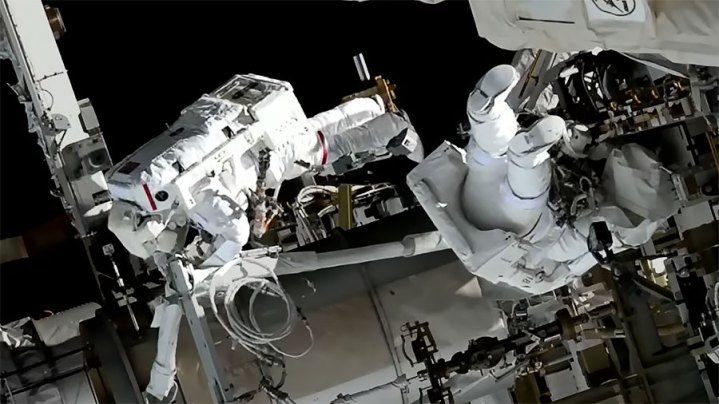Two astronauts from the International Space Station (ISS) yesterday performed the first spacewalk of the year, working on the exterior of the station as part of a long-term program to upgrade the ISS power system. The spacewalk took place on Friday, January 20, and lasted over seven hours, though one troublesome strut wasn’t bolted into place as planned.
The two astronauts performing the spacewalk were NASA astronaut Nicole Mann and Japan Aerospace Exploration Agency (JAXA) astronaut Koichi Wakata, and this was the first spacewalk for each of them.

The ISS solar arrays which provide power to the station are getting old, so in a long-term project astronauts are installing new arrays called iROSAs at an offset on top of the old arrays — allowing both sets of arrays to provide power. The aim of the spacewalk yesterday was to install two mounting platforms, which would be used to install new solar arrays later this year.
The astronauts managed to install a platform for the new array on the 1B power channel, but could only perform part of the work required for the second platform at the 1A power channel. “Due to time constraints, plans to bolt a final strut for the second platform were deferred until a future spacewalk,” NASA writes. “There is no impact to station operations.”
One challenge for the spacewalkers came in the form of a tricky foothold, space.com reports. There are restraint points on the outside of the station that spacewalkers use to stay in place while they work, including one type designed to move into different positions called an articulating portable foot restraint or APFR. One such “sticky” APFR caused Mann some trouble as it was hard for her to get into and out of the device, though with Wakata’s help she was able to make it work.
This issue with the APFR took up extra time though so the pair weren’t able to get the middle strut of the second platform in place. This job will be postponed until a later spacewalk.



